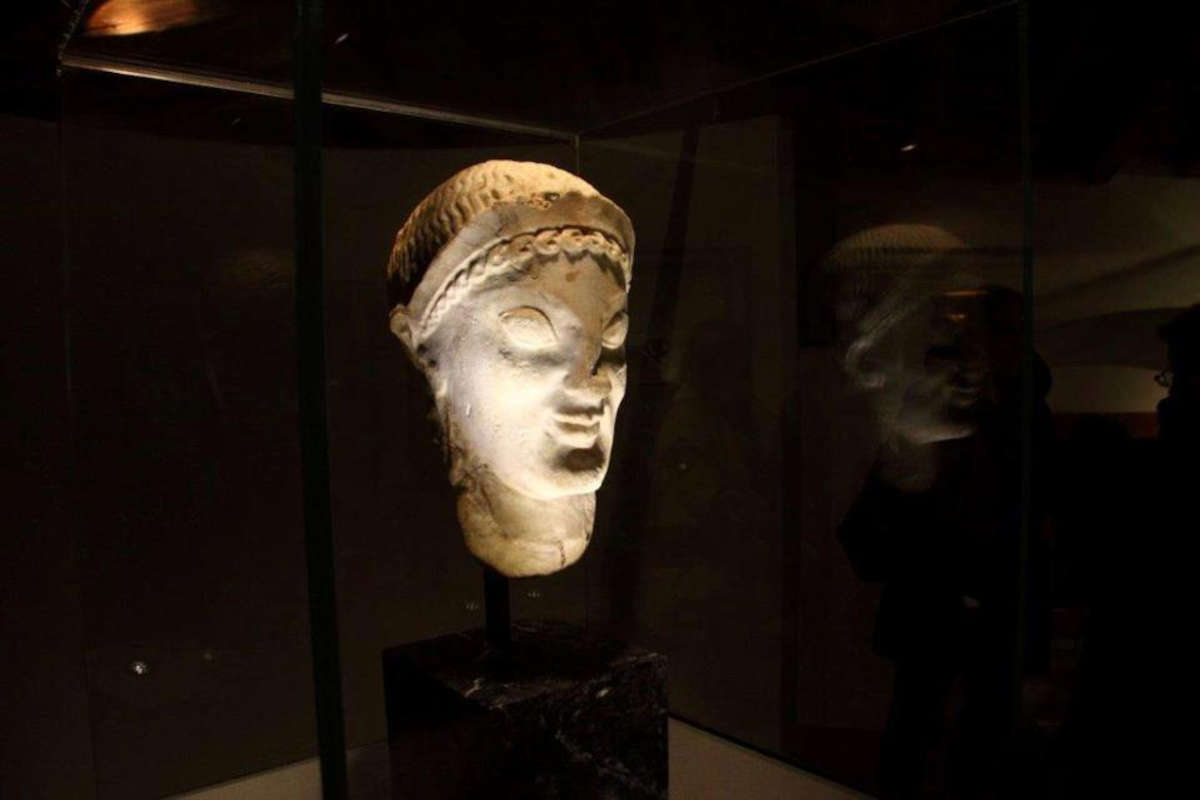In Tuscany, the Museo Civico Archeologico e della Collegiata in Casole d’Elsa (Siena) is hosting a series of events dedicated to one of the least known but most precious treasures of archaic Etruscan art: the Testa Bargagli. The initiative entitled precisely The Head Bargagli, which is part of the broader regional project “Etruschi 85/25,” promoted by the Region of Tuscany and organized by Fondazione Musei Senesi with the collaboration of the Municipality of Casole d’Elsa, aims to enhance the Bargagli Collection, one of the most significant nuclei of Etruscan heritage preserved in the Siena area, and to bring attention back to the archaeological heritage of the Sienese territory.
The events kicked off on Saturday, July 12, 2025 with the first of three thematic guided tours. This will be followed by a second on Thursday, September 19, and a third on Saturday, November 22, all hosted in the halls of the Casola museum. The tours will be opportunities to learn more about the Bargagli Collection and to take a closer look at the famous Bargagli Head, which dates to the last decades of the sixth century BC. In addition, visitors will have the chance to access the Tomb of Agresto, located just outside the historic center, an opportunity that will further enrich the experience with direct contact with funerary evidence from the Etruscan world.
The Bargagli Head is a masterpiece that testifies to the very high level reached by Archaic Etruscan art. Found right in the territory of Casole d’Elsa, the sculpture is made of Apuan marble and has been dated to the last decades of the 6th century BCE. The work depicts a female figure that scholars interpret as a deity. It is striking for the harmony and refinement of its forms: the elongated, oval face, the almond-shaped eyes, the half-closed lips suggesting a hint of speech, the pronounced chin, the ears embellished with large disc earrings, and the hair clinging to the skull and held back by a diadem. Details that reveal not only the sculptor’s technical expertise but also the intention to give the figure a character of sacredness and solemnity.

The Bargagli Collection, of which the Head represents the best-known piece, constitutes a heritage of particular importance for Casole d’Elsa and for the whole of Sienese Etruria. Formed beginning in the second half of the nineteenth century, it includes artifacts from finds made in the surrounding area, including funerary materials, grave goods and objects of daily use. Over time, part of the collection flowed into the National Archaeological Museum in Siena, but the core preserved in Casole continues to offer insights for research and enhancement.
The “Etruschi 85/25” project, in the context of which these initiatives are included, was conceived by the Region of Tuscany to celebrate the central role of the Etruscans in the history and cultural identity of the region. Coordinated by the Fondazione Musei Senesi, the program aims to create a network of events spread across various centers in Tuscany that can bring attention back to Etruscan heritage through exhibitions, conferences, workshops and activities for the public. Casole d’Elsa, with its tradition of studies and discoveries, is a full participant in this path of enhancement.
The civic museum, located inside the former collegiate church of Santa Maria Assunta, has for years played a key role in the preservation and dissemination of the local archaeological heritage. The organization of the guided tours and conference testifies to the desire to strengthen the link between community, territory and cultural heritage, offering not only scholars and enthusiasts, but also citizens and tourists, the opportunity to learn more about the Etruscan civilization.
The focus on the Testa Bargagli also responds to the need to bring back to the foreground works of extraordinary quality that, although they do not enjoy the fame of finds preserved in larger and more visited museums, possess a primary historical and artistic value. The sculpture, in fact, stands out not only for its technical expertise but also for its use of Apuan marble, a rare material in the context of Archaic Etruscan art, which testifies to the circulation of resources and the ability of the Casole communities to fit into larger networks of exchange.
The combination of artistic heritage, scientific research and popular initiatives is thus the key element of the proposed program for 2025. The Bargagli Collection and its most famous work become tools to bring past and present into dialogue, to promote knowledge of Etruscan civilization, and to enhance a community that has guarded the traces of that history for centuries.
 |
| Etruscans, the Testa Bargagli protagonist at the Archaeological Museum of Casole d'Elsa |
Warning: the translation into English of the original Italian article was created using automatic tools. We undertake to review all articles, but we do not guarantee the total absence of inaccuracies in the translation due to the program. You can find the original by clicking on the ITA button. If you find any mistake,please contact us.